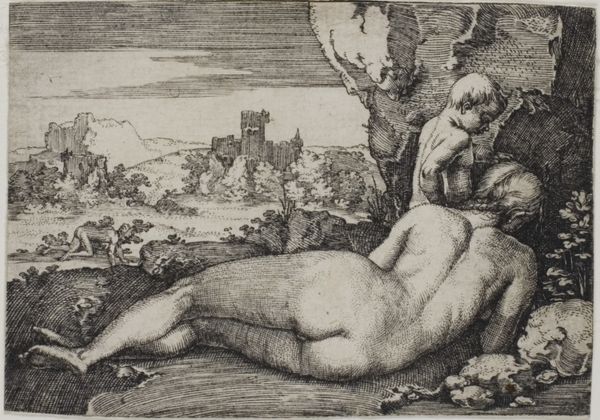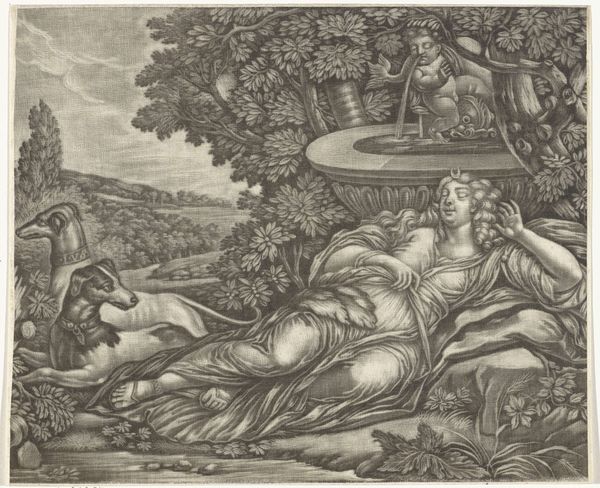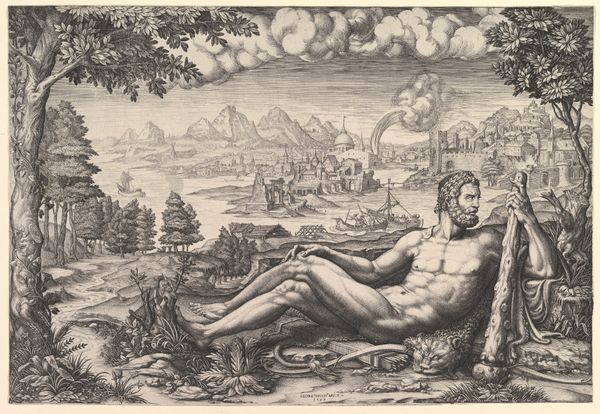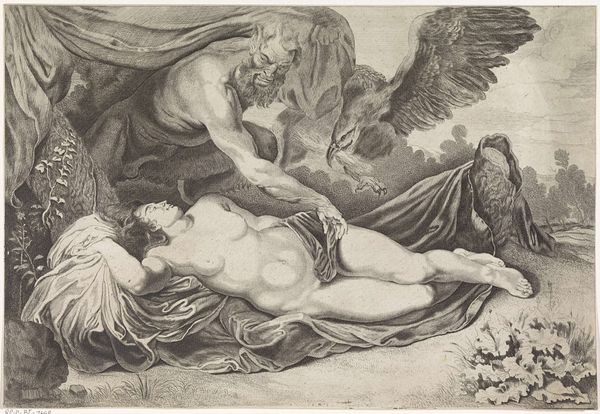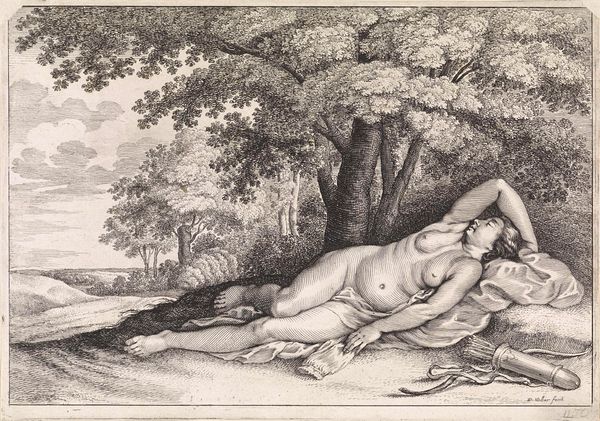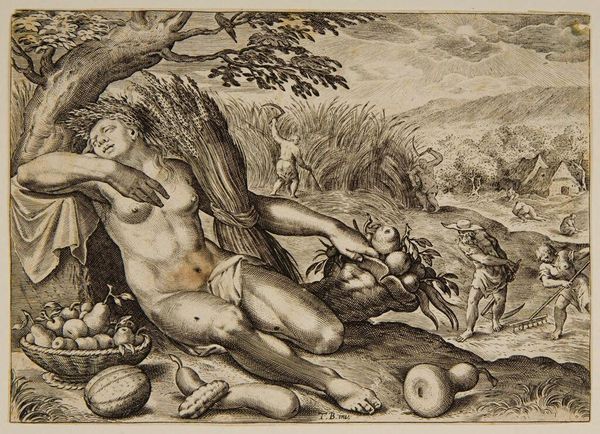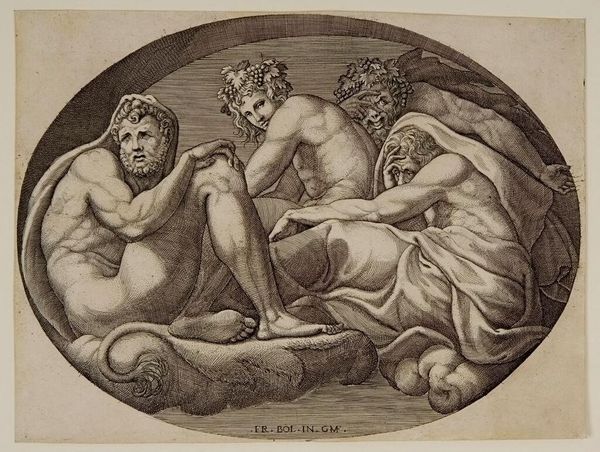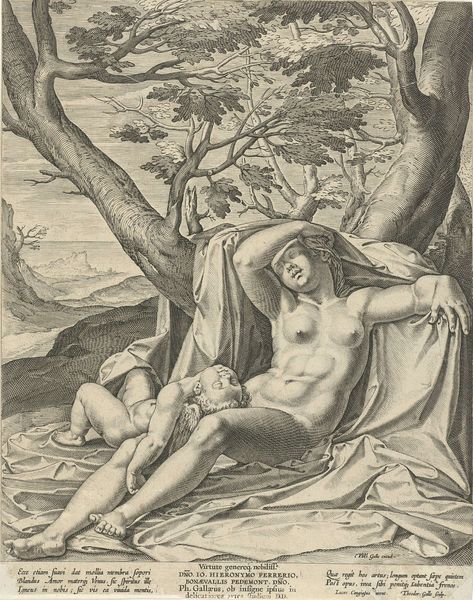
painting, oil-paint
#
painting
#
oil-paint
#
landscape
#
mannerism
#
oil painting
#
mythology
#
history-painting
#
italian-renaissance
#
nude
#
portrait art
Copyright: Public domain
Editor: So, here we have "Rea Silvia" painted in 1530 by Francesco Melzi, made using oil paints. It's really striking how the redness of the fabric and flesh tones pull you in despite the expansive landscape in the background. What are your thoughts on this piece? Curator: My eye is drawn to the fabrication of ideal beauty within a very specific economic and social context. This isn't just about aesthetic perfection, but about the construction of female identity within a patriarchal system and the use of specific materials to accomplish this effect. Editor: Interesting. So, how does that play out, exactly, in the artwork itself? Curator: Well, look at the oil paint itself. Oil allows for a remarkable blending and layering, building up skin tones that idealize smoothness and pallor. The cost of these pigments, the time taken to apply these layers...these factors speak volumes about the elite circles Melzi worked within, the very limited accessibility for both creation and viewership of the final product. Editor: I see. So, the *materials* themselves encode a social message? Curator: Precisely! Think about the red drapery too, achieved through expensive dyes and laborious weaving. It contrasts the raw, idealized female form against visible displays of status. Where does the mythological figure end, and the consumption of art begin? Editor: It's easy to get lost in the aesthetic and miss how much the economics of making impacted the artist and viewer! Curator: Exactly. Appreciating the effort embedded into the artistic piece reveals a history lesson. Editor: Right! It changes how I see the artwork altogether. Thanks for pointing out that perspective.
Comments
No comments
Be the first to comment and join the conversation on the ultimate creative platform.
